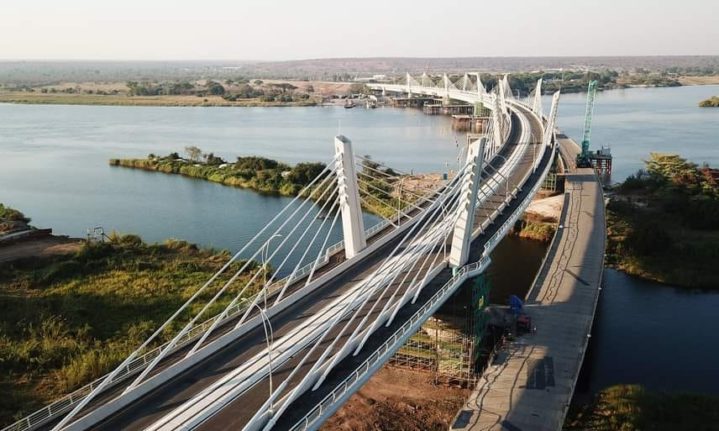
Botswana's President Mokgweetsi Masisi recently unveiled the majestic Okavango River Bridge in Mohembo, marking a significant milestone in the nation's infrastructure development. With a price tag of 1 billion pula (£36.4 million), this iconic cable-stayed bridge spans the Okavango River, serving as a vital artery for transportation and connectivity in the heart of Southern Africa. Let's delve into the history, specifications, and socio-economic significance of this engineering marvel.
1. Conception and Vision: The Mohembo Bridge project traces its roots back to 2004 when the Botswana government envisioned a transformative crossing over the Okavango River. Propelled by a commitment to innovation, the project evolved from a mere crossing to an iconic symbol of progress and connectivity. Among six proposed designs, the elephant tusk tower concept by Kobamelo Kgoboko emerged victorious, embodying Botswana's rich cultural heritage and environmental stewardship.
2. Location and Connectivity: Nestled in Mohembo Village, Botswana, the bridge links the Mohembo East and Mohembo West ferry landing sites, offering seamless access to neighboring countries and enhancing tourism and trade opportunities. Its strategic location near the Namibian border positions it as a gateway to regional integration and economic growth.
3. Construction and Collaboration: Italian Company, Itinera-Cimolai Joint Venture, spearheaded the construction of this 1.2-kilometer-long engineering marvel, which commenced in 2016. The project, funded entirely by the Botswana government, involved meticulous planning and execution, with ASTM S.P.A. and Cimolai S.P.A. contributing their expertise to bring the vision to life.
4. Architectural Splendor: At a staggering length of 1,161 meters, the Mohembo Bridge stands as the longest bridge in Botswana, adorned with distinctive elephant tusk pylons strategically positioned 200 meters apart. Its elegant design and robust structure symbolize the nation's commitment to sustainable development and environmental conservation.
5. Socio-economic Impact: The completion of the Mohembo Bridge heralds a new era of prosperity for communities along the Okavango River, offering them unrestricted access to essential services and opportunities. Chief Paulos Shakova of Mohembo Village lauded the bridge as a symbol of freedom and progress, ending decades of reliance on unreliable transportation methods.
6. Environmental Conservation: Built in compliance with international environmental protocols, including the Ramsar Convention and UNESCO World Heritage Site regulations, the bridge prioritizes ecological sustainability. It facilitates the free movement of water, wildlife, and sediment, preserving the delicate ecosystem of the Okavango Delta.
7. Vision for the Future: Minister of Transport and Public Works, Eric Molale, envisions the bridge as more than a transportation hub but also a tourism attraction, offering panoramic views of the Okavango River and its abundant wildlife. President Masisi emphasized the bridge's role in fostering social cohesion and economic prosperity for generations to come.
The inauguration of the Okavango River Bridge represents a triumph of engineering ingenuity and collaborative spirit, underscoring Botswana's commitment to progress and prosperity. As the nation embraces a new era of connectivity, the Mohembo Bridge stands as a testament to the enduring legacy of innovation and vision.













